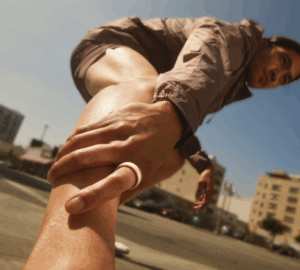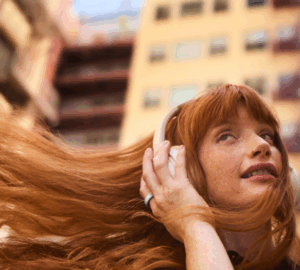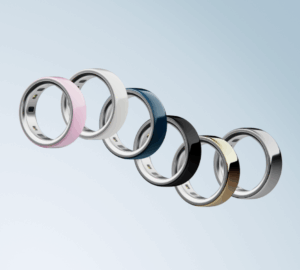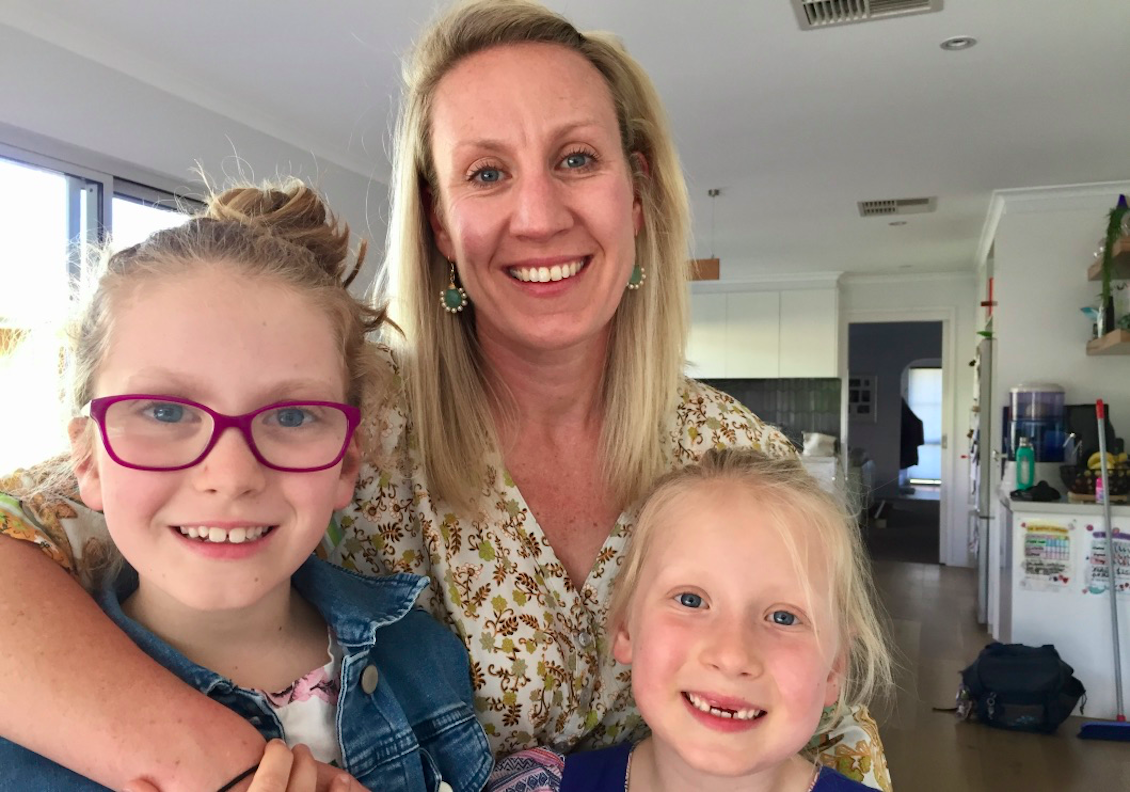Angela is an Osteopath, mother of two young daughters currently living in Melbourne, Australia, and has recently received a breast cancer diagnosis after battling an autoimmune condition for the past 10 years. She’s used Oura to combat her condition and to stay on top of her health as she undergoes her cancer treatment.
—
Angela’s Autoimmune Condition
10 years ago, Angela got the news that she had a genetic autoimmune condition known as Ankylosing Spondylitis, or AS.
“My autoimmune condition attacks the joints of the pelvis and spine. Basically, the immune system thinks that there’s a problem that signals it to attack healthy tissue. In AS, this creates an inflammatory process that can ultimately lead to joint fusion.”
Angela’s condition can be as painful as it sounds, and her sleep takes the hit. Sleep is our body’s best source of recovery, so Angela used her medical background and interest in finding alternatives for immune suppressant medication to battle her condition.
“I’m an Osteopath, so I have a background in understanding the body and human physiology. I know I’m not a specialist or a rheumatologist, but I’m certainly very inquisitive and have done everything I can to understand the pathology of my condition. As a result, I have tried many different approaches and protocols on myself, the whole N=1 experimentation. It really helps that my husband shares the same passion and interests for health so I always feel supported in whatever path I choose to take.”
Her medical background wasn’t the only thing fueling her desire and passion for finding alternative treatments for her condition, it was also the potential cancer risk that comes with immunosuppressants and protecting her daughters.
“My main focus has been to reduce or cease taking my immune-suppressing medication. We know that my youngest daughter also carries the AS gene so that has been a huge motivational factor! I ultimately never want her to have to go through what I have and I believe prevention is better than cure! To add to that, I was told that there is a potential risk of cancer, amongst other side effects of immune suppression.
So, while I have seen success in adopting methods that naturally support the immune system and reduce inflammation, we are also applying these, where appropriate, to her. I really just want to prevent her from ever having to deal with it.”
So how does Angela monitor the success of her personal experiments? Well, for the last year, she has turned to Oura and its insights to monitor her health.
Angela & Oura
The mutual interest in health between Angela and her husband is what first led her to Oura.
“I bought my husband the Oura Ring for his birthday because he was really interested in tracking his sleep. When I saw the data he was getting I was so impressed! So, to try to help myself and my condition even more, I got my own ring in November last year (2019) and have been using it ever since.”
Oura provided Angela with a simple way to observe several key health metrics, delivered insights that changed the way she monitored her body status and helped her see the results of her self-experimentation.
“When I first got the Oura ring I was most interested in it giving me feedback on my sleep and HRV (recovery status). At that time I was really frustrated as I would find it hard to sleep well before a big trail run. Most runners don’t sleep well before a race. All that anticipation in what you’re about to take on makes it hard to quieten your mind. But, to add to that I have always been very sensitive to sleeping somewhere new or unfamiliar. I hoped that Oura’s insights would help me to improve my energy come race day.
I read Matthew Walker’s book ‘Why We Sleep,’ which I thought was great, and I learned that there is nothing good quality sleep doesn’t have a positive effect on! I was fully convinced that if you could bottle the key to good sleep in a drug, there’d be nothing better for your health. That’s where Oura makes the difference for me— I could get some understanding and start making changes.”
That’s exactly what Angela did. Her medical mind and interest in experimentation began to use Oura’s insights to catalyze change.
“To be more specific, Oura quickly helped me realize that in order to optimize deep sleep I needed to go to bed around 9:30pm.”

A late-night (left) and an optimal night (right) with Oura.
“Both my husband and I found that the hours between 10-12 midnight are powerful hours for deep sleep. We focused on shifting our schedules to encourage getting to sleep at this time of night.”
Given her love for trail running and her condition, Angela was also focused on her recovery— more specifically, HRV.
“My husband and I started looking for ways to boost our HRV. After experimenting, we found that a cold-hot shower method worked. Alternating 30 seconds of cold with warm and repeating that two or three times really helped prior to bed!”

Angela’s shower method keeps her HRV consistent.
But, as Angela was getting in the routine of finding what works for her, she was diagnosed with what she had hoped to prevent.
Angela’s Breast Cancer Diagnosis
“Yeah, so I can get into the cancer diagnosis story. There’s a lot to say.
Obviously, when I got diagnosed it was a huge shock. I didn’t see it coming. I wasn’t sick, I was fully fit and planning my first Trail Marathon, I had a good work-life balance, which has been a focus for us. I was working during school hours, so I was able to be there for the kids. While at the same time I loved my work as an Osteopath, my patients, and my colleagues.
I haven’t worked since March 24th due to my diagnosis and the COVID pandemic. I was too exposed to the public and my medical team recommended I stop straight away.
Having this decision made for me was a good thing in hindsight as I love what I do so I think I would have wrestled with this decision if the boundary wasn’t so clear with the COVID risk.”
Angela continues.
“So, yes, my diagnosis. I was turning over in bed when I felt a small lump in my right breast. I guess being an Osteo helped me to feel it because it was very very small. I told my husband that I would book an appointment with my GP the next morning to check it out. I wasn’t that concerned and went to sleep easily. As I said, there were no other signs that anything was wrong.
The scans and biopsies revealed an aggressive form of breast cancer known as HER2 Positive Invasive Ductal Carcinoma.
My understanding is HER2 is a growth factor receptor that sits in the cell membrane of the ductal cells. And, for whatever reason, my breast cells have amplified this receptor and it’s telling the cells to grow super fast leading to irregular cell function and metabolism, which is cancer in a nutshell.”
Then a treatment and chemotherapy plan was discussed. It was not as straightforward as usual in this diagnosis due to the pandemic.
“When my surgeon went through the recommended treatment I was told there was uncertainty due to the pandemic. For example, I was informed that I would need a mastectomy at some stage, but in March 2020 there was NO reconstruction surgery option. It was considered to be elective even in my case! Seemed crazy but there was nothing I could do about it. My surgeon also wanted to minimize my hospital exposure which led me to have a lumpectomy which was only a day procedure. They sent me home the same day when often you’d stay overnight. Luckily, all went well.
I have now been through six months of chemotherapy and I am happy to say it’s coming to an end soon. The next major step is the mastectomy in November and this time I can have a reconstruction!”
As part of her treatment, Angela is doing all she can to help herself by calling on her medical background, unfaltering resilience, and her Oura Ring.
“I have studied under ACNEM (Australian college for nutritional and environmental medicine) so I had no doubt that I wanted to support conventional cancer treatment with an integrative team. That became my initial focus amongst all the appointments I had to attend.
I feel blessed that I have an amazing team made up of; Naturopath Dr. Tanya Wells (Melbourne Integrative Oncology Group), GP acupuncturist Dr. Angela Catanzariti and Integrative GP, Dr. Greg Schwartz. They all specialize in oncology in their respective fields. Dr. Shwartz actually has an Oura Ring himself. He’s been really interested in my Oura ring feedback throughout my treatment. It allowed us to discuss my heart rate and heart rate variability in response to Chemotherapy recovery.”

Post-chemo HRV and heart rate data Angela shared with Dr. Schwartz.
Angela’s habit of experimenting with treatments and monitoring her Oura data became even more essential here.
“Greg really reinforced, ‘You can do all the diets and take all the supplements, but there is no point if your stress and sleep are not great’. I felt really connected to this message. This led him to recommend a high dose of melatonin and low-dose beta-blockers. It was great to see the positive effects both interventions had on my Oura ring data. My overnight heart rate stabilized and my sleep scores improved. That’s what he was trying to achieve.”

Angela’s stable heart rate.
But with the ups, come the downs, and Angela saw those as well.
“The first round of chemo got a little scary because my heart rate variability went down to an average 18 for three nights in a row and it would take me a good week to fully recover. I was quite concerned at the time but then reassured after speaking to Dr. Shwarts to focus more on my recovery which then led to an improvement. My oncologist has also been fascinated by the data I can show her from my Oura. The heart takes a hit with the type of treatment I’m on so she is always keen to hear about my Oura data.
My Oncologist explained she would usually recommend a heart scan to check ejection fraction during treatment but, as I can give her my exact biometrics she feels there has been no need for this test! I see this as a positive. One less test for me!”
Angela, Her Family, & Her Fortitude
Angela is still pushing through, trying to prioritize sleep, and waiting for her mastectomy procedure in November, but not without some other chemo-induced side effects.
“Oh! Also, one ongoing side effect of Chemo is hot flashes from being put into a medically induced menopause. It was once again fascinating for me to see using Oura my body temperature change once I started chemo. If you take a look at the trend for body temperature over the last 6 months it’s obvious to see the effect chemo has had on my hormone cycle. It was up and down with my periods (like clockwork) then it plateaus once I started treatment. I hope one day they will return.”
But, unlike her periods, she’ll always have her two daughters, and one of them is doing all she can to help her mom in her battle.
“My older daughter, Summer (9 yo), decided to shave her head to raise money for the National Breast Cancer Foundation as well as donate her hair to Variety children’s charity. She’s got long beautiful hair so someone is going to be very lucky! Summer has raised nearly $14,000, which has blown her original goal away. It’s been so positive to see all the love and support through this tough time. Yeah, she’s an amazing, cool little chick that just doesn’t care about her hair if it means helping someone else.”

She may not care about her hair, but it’s only because she cares about her mom more.
To Donate
If you’d like to donate to Summer’s Big Brave Shave Fundraiser click here.
What’s Your Oura Story?
Everyone’s story is unique. Share yours with the Oura Community, or just give the Oura Team an update of where you are in your health journey!











